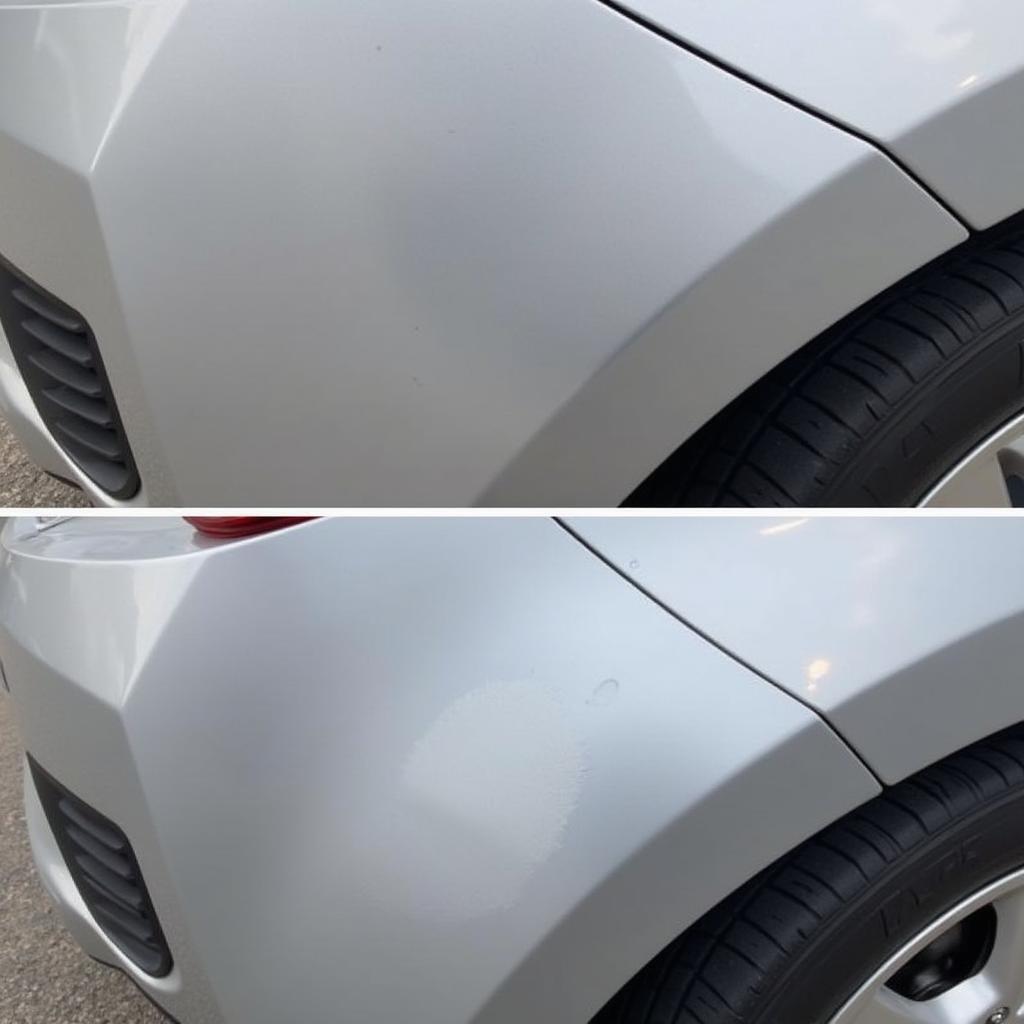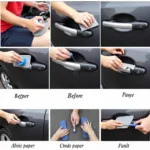Cracked car paint is an unsightly problem that can lead to more serious issues like rust if left untreated. Knowing how to repair cracked paint on a car yourself can save you money and maintain your vehicle’s appearance. This guide will provide a comprehensive overview of the process, from identifying the type of crack to applying the final clear coat.
Learning how to repair cracked paint effectively involves understanding the underlying causes. Factors such as extreme temperatures, exposure to UV rays, and even minor impacts can contribute to paint cracking. The type of crack, whether it’s a hairline fracture, a spiderweb crack, or deep chipping, will determine the repair approach. Identifying the extent of the damage is the first step towards a successful repair. repair cracked car paint offers further insights into the different types of paint damage.
Assessing the Damage and Gathering Your Supplies
Before you begin, it’s crucial to accurately assess the damage. This will help you determine the necessary supplies and the best repair method. Clean the affected area thoroughly with soap and water, then dry it completely. For small, hairline cracks, you might only need touch-up paint. Larger cracks and chips require more extensive preparation. Gather your supplies, including sandpaper (various grits), primer, touch-up paint, clear coat, masking tape, and a rubbing compound. Having everything ready will streamline the process.
Preparing the Affected Area
Proper preparation is key to a seamless repair. Lightly sand the cracked area with fine-grit sandpaper (around 1500-grit) to smooth the edges and remove any loose paint flakes. Feather the edges of the sanded area to blend it with the surrounding paint. This creates a smooth transition and prevents a noticeable ridge after the repair. For deeper cracks, you might need to apply a thin layer of body filler and sand it smooth before priming. This step ensures a level surface for paint application.
Priming and Painting the Cracked Area
Once the area is prepped, apply a thin, even coat of automotive primer to the sanded area. Let it dry completely according to the manufacturer’s instructions. This helps the new paint adhere properly. Next, apply the touch-up paint in thin, even coats, allowing each coat to dry before applying the next. Avoid applying thick coats, as this can lead to runs and unevenness.
Applying Clear Coat and Finishing Touches
After the color coat has dried, apply a few thin coats of clear coat. This protects the new paint and gives it a glossy finish. Once the clear coat is dry, use a rubbing compound and a polishing pad to blend the repaired area with the surrounding paint. This creates a seamless and professional-looking finish.
How to Repair Cracked Paint on a Car Bumper?
Bumpers are particularly prone to cracks due to their exposed position. The process for repairing cracked paint on a bumper is similar to other areas of the car, but often requires more flexibility in the materials used. repair cracked paint car bumper provides specific advice on this topic. Using a flexible primer and paint specifically designed for plastic bumpers ensures the repair withstands the stresses and flex of the bumper.
repair cracked paint on car bumper also covers the specific preparation steps required for plastic bumpers, which may differ from metal body panels.
 Car bumper after paint repair
Car bumper after paint repair
Conclusion
Repairing cracked paint on your car is a manageable DIY project that can significantly improve your vehicle’s appearance and prevent further damage. By following these steps and exercising patience, you can achieve a professional-looking result and save money on costly body shop repairs. how to repair cracked car paint offers further detailed instructions if you need additional guidance. Don’t let cracked paint diminish your car’s value; take action and restore its finish today.
FAQ
- Can I use any type of paint for car touch-ups? No, you should always use automotive touch-up paint that matches your car’s original color code.
- Do I need to prime before painting? Yes, primer helps the paint adhere properly and provides a uniform surface.
- How long does it take for the paint to dry? Drying times vary depending on the product and environmental conditions, but generally, each coat should dry for at least 30 minutes before applying the next.
- What if the crack is very deep? For deep cracks, you may need to apply body filler before priming and painting.
- Can I repair cracked paint in direct sunlight? It’s best to avoid painting in direct sunlight, as this can cause the paint to dry too quickly and unevenly.
- How do I find my car’s paint code? The paint code is usually located on a sticker inside the driver’s side door jamb, glove compartment, or under the hood.
- What should I do if the cracked paint is accompanied by rust? If there is rust present, you’ll need to remove it completely before repairing the paint.
You may find these other topics on our site helpful: how to repair cracked paint on car.
Need more help? Contact us via WhatsApp: +1(641)206-8880, Email: [email protected]. Our customer service team is available 24/7.


